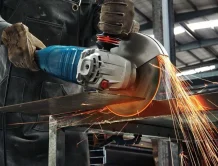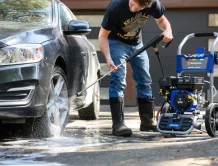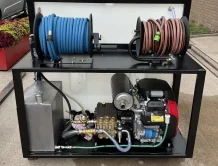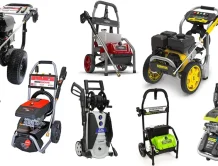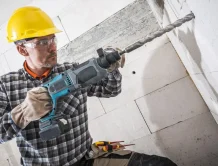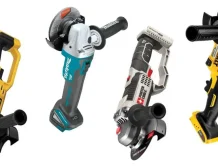All those who fall into the category of car owners more or less have dealings with a pressure washer or engage in pressure washing. In fact, the term “pressure washer” refers to a structure or a place designed and created for cleaning various types of vehicles. Among them, the term “home pressure washer” is a less familiar expression. This term refers to a device that can expel water at high speed and pressure from a nozzle or the output member. Due to its small dimensions, this device is recognized with the suffix “home pressure washer.”
This apparatus can carry out cleaning operations with high speed and precision, easily removing various types of dirt and contaminants. However, the use of a home pressure washer is not limited to industrial areas alone. Instead, this device can be purchased for cleaning purposes in the garden, yard, pool, driveway, stairs, pavement, building, and all household needs.
Types of Home Pressure Washers:
With a little investigation, it can be concluded that the primary criterion for categorizing this apparatus is its structural dimensions. In general, this device is classified into three categories: small, medium, and large pressure washers. The minimum power consumption for each of the mentioned items is 100, 130, and 160, respectively. By purchasing a small-sized home pressure washer, you can clean items such as cars and bicycles. Conversely, a medium-sized home pressure washer is suitable for cleaning building facades, walls, and fences. The large-sized device can be used for demanding industrial processes such as degreasing, paint removal, and extensive surface cleaning.
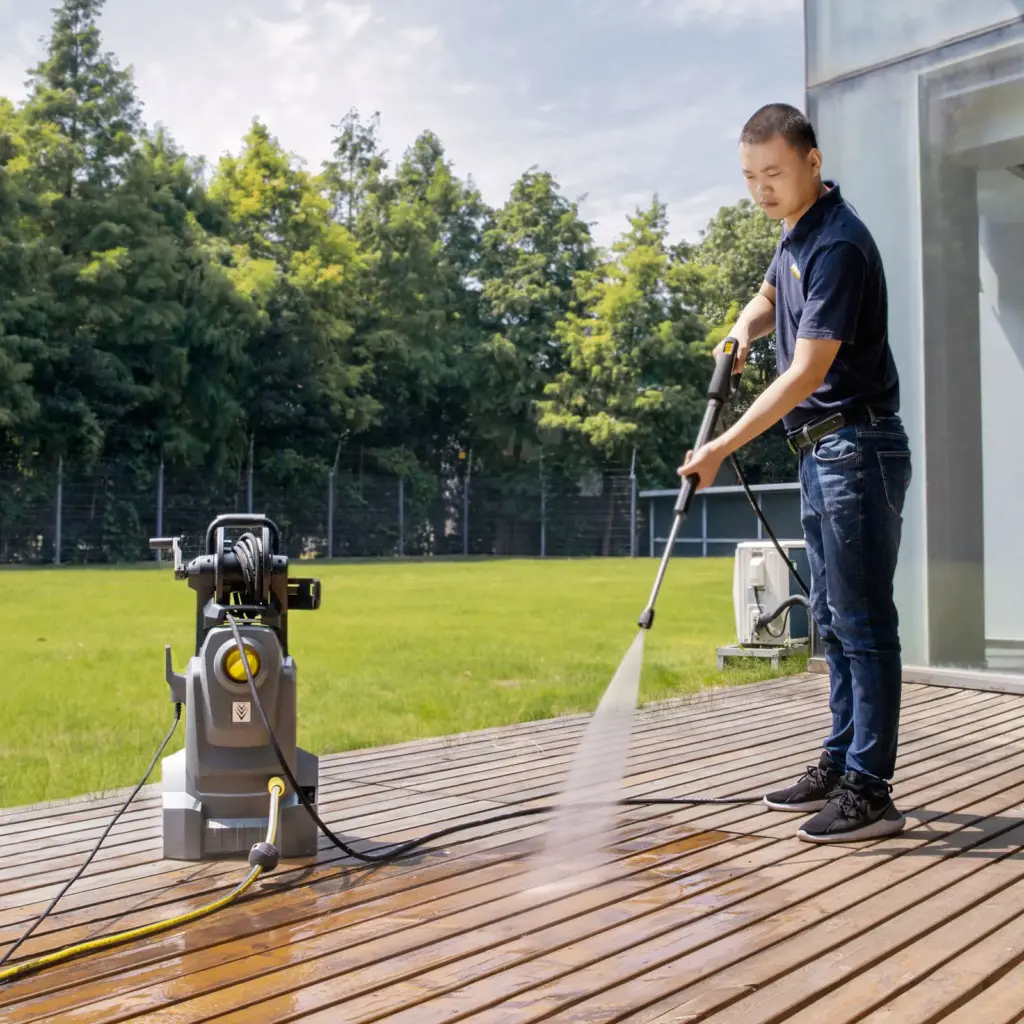
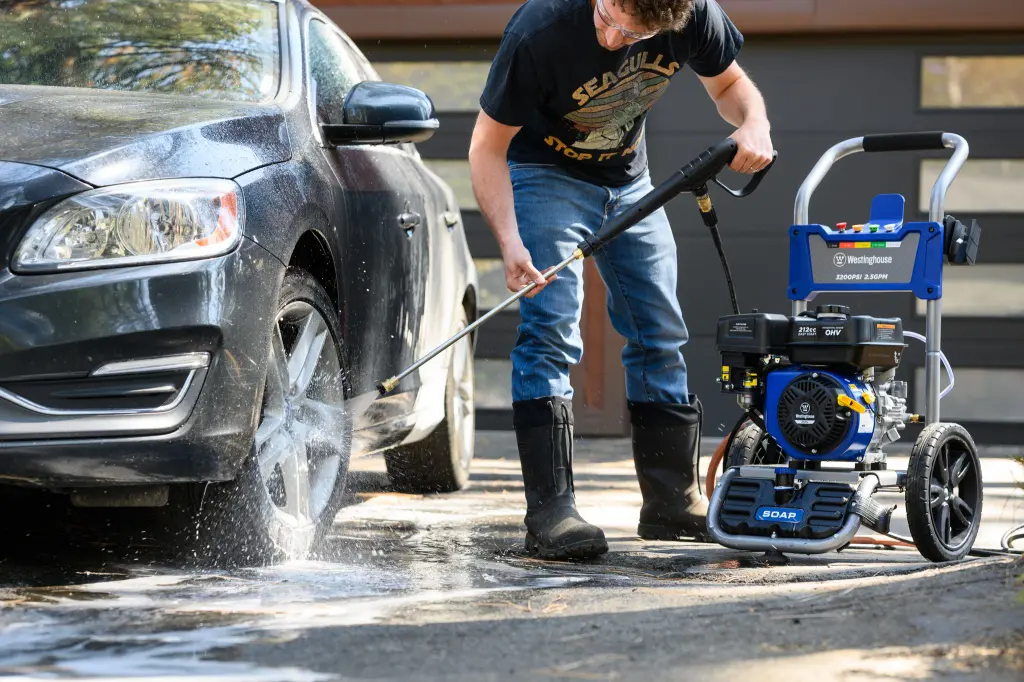
Important Concepts of Home Pressure Washer:
When you purchase this device, you’ll discover that the mentioned structure has many components and concepts. Below, we’ll explain the essential components of a home pressure washer and its basic concepts.
Motor Power:
The first component on this list is the power and capacity of the motor. The higher the power, the faster and more powerful the water is expelled from the nozzle. This power is provided by the motor of the device. The main task of the motor in this apparatus is to pump water. It’s worth noting that higher power comes with higher electricity consumption and cost, as these two concepts are interdependent.
Flow Rate (GPM):
The term “GPM” refers to the maximum flow of water that a pressure washer can pass through itself in one minute. This concept is directly related to the output water pressure. The higher the flow rate, the higher the pressure, and with increased pressure, the cleaning power of the device also increases. The temperature of the water, whether it is hot or cold, also affects this process. When warm water is used for cleaning, the percentage of pollutant destruction increases significantly because cleaning agents dissolve more easily in warm water, providing better cleaning properties.
Nozzle:
The nozzle is one of the practical components of a home pressure washer. This part is responsible for adjusting the width of the water discharged from the device. In other words, with the help of the nozzle, you can control the pressure and the amount of scattered water. Remember that high water pressure can damage surfaces, so avoid excessive use.
Handle and Coupling:
The handle and coupling are the last components that have practical applications in this device. Couplings are sold in male and female types.
How to Use a Home Pressure Washer:
It is clear that the method of operation with a home pressure washer varies depending on its model and technical specifications. For example, some of these pressure washers have tanks specifically designed for adding various cleaning agents. Undoubtedly, these types of structures demonstrate better performance when cleaning surfaces. These tanks usually contain a special hose that, by creating a vacuum and spraying water at the bottom of the hose, receives and adds cleaning agents to contaminants.
Applications of Home Pressure Washer:
Certainly, up to this point in this article, you have discovered some of the applications that a home pressure washer can have. To enhance your understanding of this product, we will examine this issue more comprehensively. In the first step, this product can wash various surfaces, including bicycles, machinery, vehicles, swimming pools, and building facades.
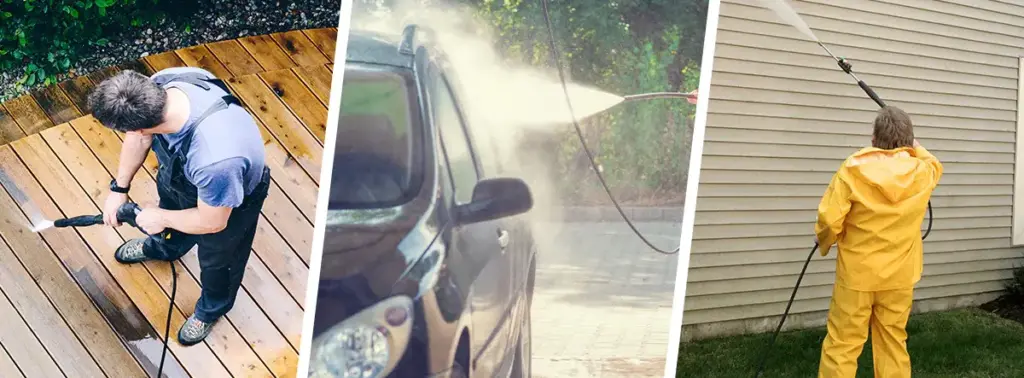
Advantages of Home Car Wash:
A home car wash can bring numerous advantages for its owners. For example, using this product contributes to reducing expenses and water consumption. Additionally, the elements of efficiency and performance increase during the use of this product. Moreover, the ease of using a home car wash allows for addressing a wide range of contaminations effectively.
Home car washes are recognized as environmentally friendly products. They create high safety during their operation and possess superior disinfecting and stain-removing properties. If you use a home car wash for cleaning your car, the achieved cleanliness lasts for an extended period.
Care for Home Car Wash:
Now that you are familiar with the advantages of this product, it’s essential to be aware of its drawbacks. This structure is relatively small and cannot continuously be present for industrial cleaning purposes. Therefore, taking necessary precautions during its use is preferable to ensure a more extended lifespan.
If proper care is not taken, some issues may arise with your structure. For instance, the motor might malfunction, or the structure may produce excessive noise and vibration during operation. Water leakage, reduced water output from the nozzle, and water deposits are also potential drawbacks that can occur with a home car wash.
Safety Tips for Using Home Car Wash:
It’s evident that using this device without risks requires adhering to specific guidelines. It’s better to use safety equipment during the operation of the structure. The input and output pressure levels should also match the values specified on the device. Here are some additional safety tips in this area:
The maximum water temperature should be 40 degrees Celsius.
Use soft water.
Avoid placing the structure on slippery surfaces.



